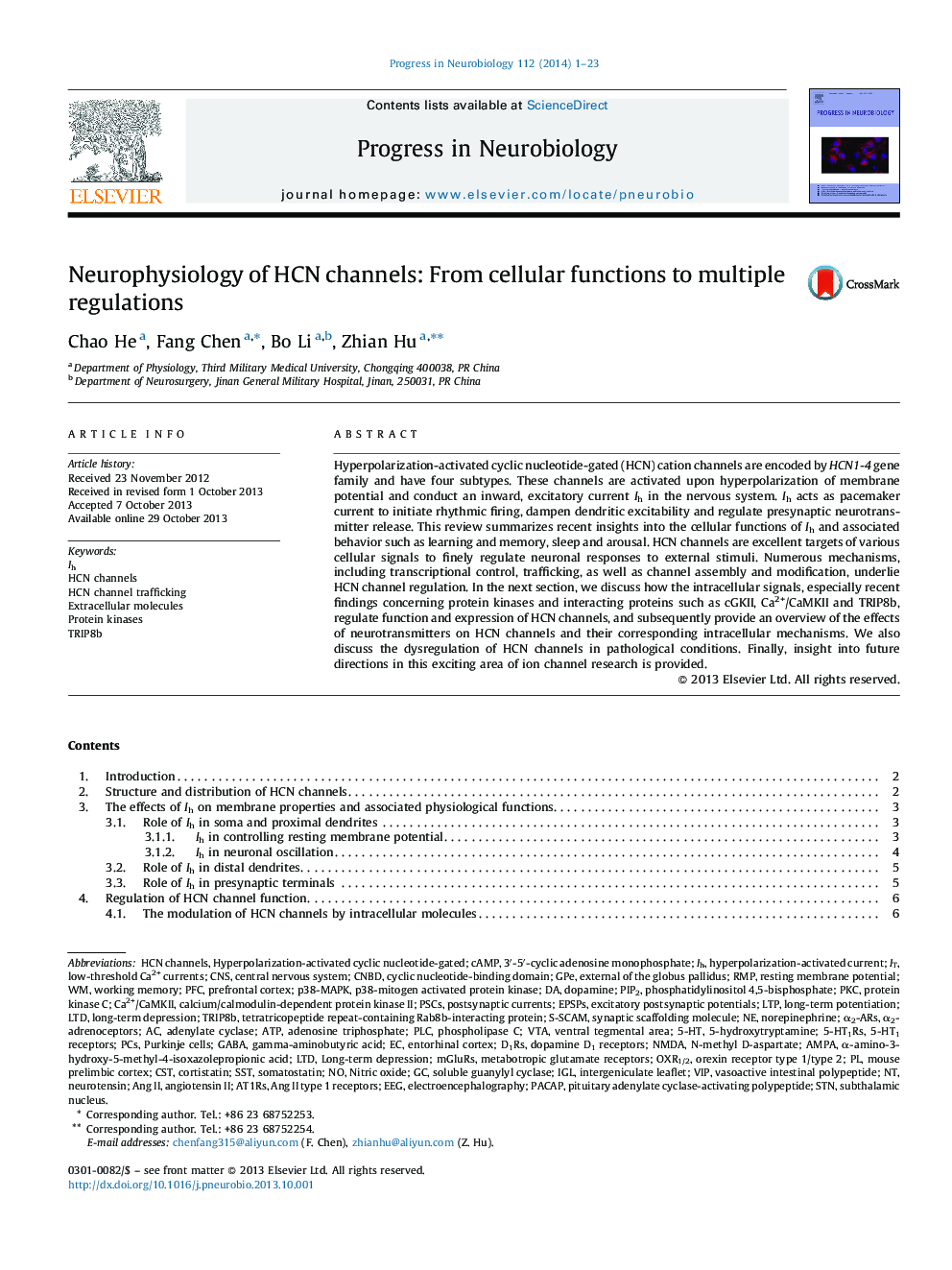| Article ID | Journal | Published Year | Pages | File Type |
|---|---|---|---|---|
| 6286523 | Progress in Neurobiology | 2014 | 23 Pages |
â¢Hyperpolarization-activated cyclic nucleotide-gated (HCN) cation channels are involved in multiple physiological processes.â¢HCN channels are excellent targets of various cellular signals to finely regulate neuronal responses to external stimuli.â¢Dysregulation of HCN channels is involved in a variety of neurological disorders.
Hyperpolarization-activated cyclic nucleotide-gated (HCN) cation channels are encoded by HCN1-4 gene family and have four subtypes. These channels are activated upon hyperpolarization of membrane potential and conduct an inward, excitatory current Ih in the nervous system. Ih acts as pacemaker current to initiate rhythmic firing, dampen dendritic excitability and regulate presynaptic neurotransmitter release. This review summarizes recent insights into the cellular functions of Ih and associated behavior such as learning and memory, sleep and arousal. HCN channels are excellent targets of various cellular signals to finely regulate neuronal responses to external stimuli. Numerous mechanisms, including transcriptional control, trafficking, as well as channel assembly and modiï¬cation, underlie HCN channel regulation. In the next section, we discuss how the intracellular signals, especially recent findings concerning protein kinases and interacting proteins such as cGKII, Ca2+/CaMKII and TRIP8b, regulate function and expression of HCN channels, and subsequently provide an overview of the effects of neurotransmitters on HCN channels and their corresponding intracellular mechanisms. We also discuss the dysregulation of HCN channels in pathological conditions. Finally, insight into future directions in this exciting area of ion channel research is provided.
